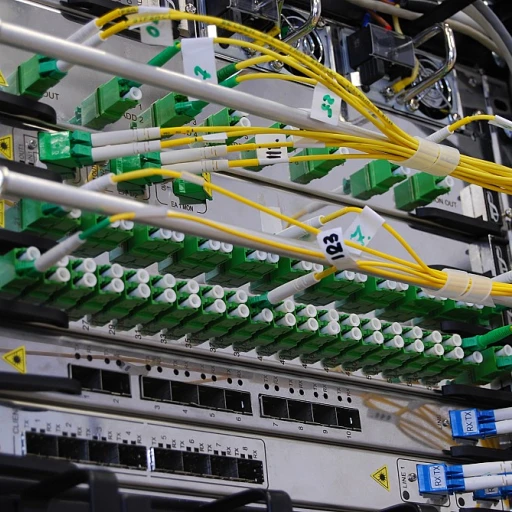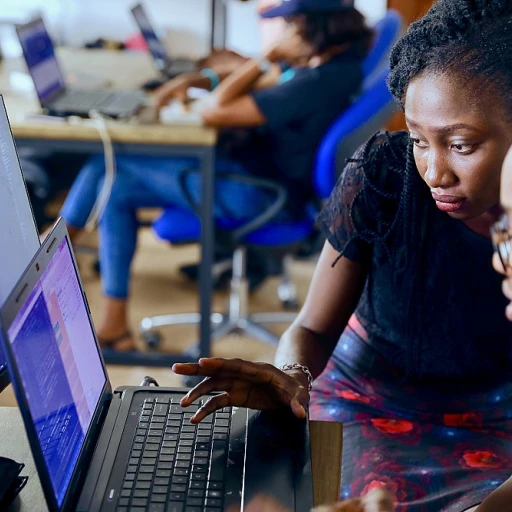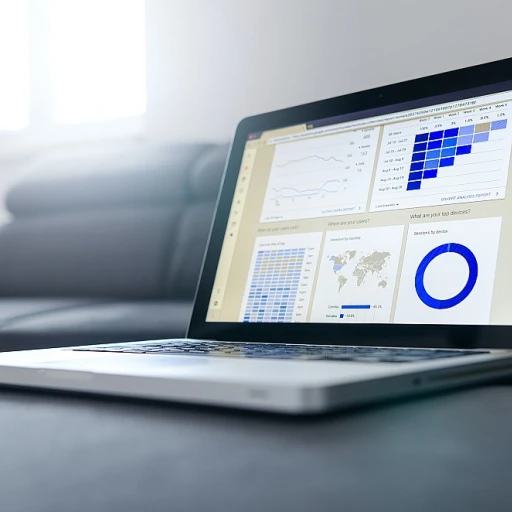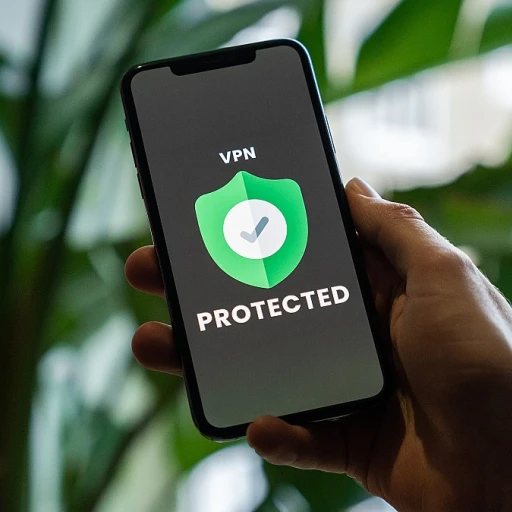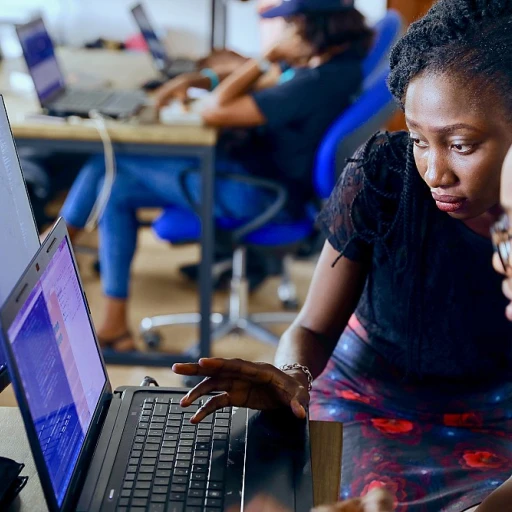
Understanding Intellectual Property in Software
Grasping the Essentials of Intellectual Property in Software
In the realm of software development, understanding intellectual property (IP) is crucial for safeguarding innovations. Intellectual property encompasses creations of the mind, such as inventions, literary and artistic works, designs, symbols, names, and images used in commerce. In the software industry, this often translates to source code, algorithms, and trade secrets that give businesses a competitive edge.
Software developers and organizations must be vigilant about protecting their intellectual property to prevent unauthorized access and potential property theft. This involves implementing robust data protection strategies and security measures to secure sensitive data and trade secrets. Without these precautions, businesses risk intellectual property leakage, which can lead to significant financial and reputational damage.
Legal frameworks play a pivotal role in protecting intellectual property. Companies should ensure they have the right legal protections in place, such as patents, copyrights, and trademarks, to defend their innovations. Additionally, understanding the nuances of intellectual property laws can help organizations navigate potential legal challenges and avoid costly disputes.
Moreover, effective management of intellectual property involves not only securing the software itself but also managing access controls and insider threats. Employees and third-party partners should be educated on best practices for data security to minimize the risk of insider threats and unauthorized access to sensitive information.
For businesses looking to stay ahead in the digital age, understanding and protecting intellectual property is not just a legal necessity but a strategic imperative. As we explore further, we'll delve into common causes of property leakage and the impact it can have on organizations, setting the stage for discussing strategies and technological solutions to mitigate these risks.
For more insights into the evolving landscape of software protection, consider exploring the evolution of BPO software in the digital age.
Common Causes of Intellectual Property Leakage
Identifying the Root Causes of Intellectual Property Leakage
Understanding the common causes of intellectual property leakage is crucial for organizations aiming to protect their sensitive data and maintain a competitive advantage. Several factors contribute to the unauthorized access and theft of intellectual property, often stemming from both internal and external threats.
Internal Threats: The Role of Employees
Employees, whether intentionally or unintentionally, can be a significant source of intellectual property leakage. Insider threats often arise from inadequate data protection measures and poor access controls. When employees have unrestricted access to sensitive data, the risk of property theft increases. Implementing robust security measures and best practices for access management can help mitigate these risks.
External Threats: Third-Party Risks
Engaging with third-party vendors and partners is a common practice in software development. However, these relationships can expose businesses to potential data breaches and property leakage. Ensuring that third parties adhere to strict data security protocols is essential for protecting intellectual property. Organizations must conduct thorough due diligence and establish clear legal agreements to safeguard their trade secrets.
Technological Vulnerabilities
Technological vulnerabilities, such as outdated software and inadequate security patches, can also lead to intellectual property leakage. Cybercriminals often exploit these weaknesses to gain unauthorized access to sensitive information. Regularly updating software and employing advanced security technologies are critical steps in protecting intellectual property.
Legal and Compliance Challenges
Legal frameworks and compliance requirements play a vital role in intellectual property protection. However, navigating these legal landscapes can be challenging for businesses. Organizations must stay informed about the latest legal developments and ensure compliance with relevant regulations to prevent property theft and leakage.
For more insights on how software applications are evolving to address these challenges, consider exploring the future of biometric software applications.
The Impact of Intellectual Property Leakage
The Consequences of Intellectual Property Leakage
Intellectual property leakage in software development can have far-reaching consequences for businesses. The loss of sensitive data, such as trade secrets and proprietary source code, can severely impact an organization's competitive advantage. When intellectual property is compromised, it opens the door to property theft, which can lead to significant financial losses and damage to a company's reputation.
One of the most immediate impacts of intellectual property leakage is the potential for data breaches. Unauthorized access to sensitive information can result in the exposure of critical business insights, which competitors might exploit. This not only undermines the security measures put in place but also erodes trust with clients and stakeholders.
Moreover, the legal ramifications of intellectual property theft can be substantial. Organizations may face costly legal battles to reclaim their rights and seek compensation for damages. This legal burden can strain resources and divert attention from core business activities, affecting overall productivity and growth.
Insider threats pose another significant risk to intellectual property protection. Employees with access to sensitive data may inadvertently or maliciously leak information, highlighting the need for robust access controls and data security measures. Implementing best practices for data protection and management can help mitigate these risks.
To safeguard against these threats, businesses must prioritize protecting intellectual property through comprehensive security strategies. This includes regular audits, employee training, and the adoption of advanced technological solutions. For more insights into how emerging technologies can aid in this effort, consider exploring the rise of AWS low-code/no-code solutions that offer innovative ways to enhance data security and access management.
Strategies to Prevent Intellectual Property Leakage
Implementing Robust Security Measures
To effectively safeguard your software's intellectual property, it's crucial to establish strong security measures. This involves setting up comprehensive data protection protocols that prevent unauthorized access to sensitive data. Implementing access controls ensures that only authorized personnel can access sensitive information, reducing the risk of property theft and data breaches.
Employee Training and Awareness
Employees are often the first line of defense against intellectual property leakage. Regular training sessions can help raise awareness about the importance of protecting intellectual property and the potential risks of insider threats. By educating employees on best practices for data security and the legal implications of property theft, organizations can foster a culture of vigilance and responsibility.
Legal Agreements and Policies
Legal agreements, such as non-disclosure agreements (NDAs) and intellectual property clauses in employment contracts, play a vital role in protecting trade secrets and sensitive data. These agreements should clearly outline the responsibilities of employees and third parties in safeguarding intellectual property. Regular reviews and updates of these legal documents can help ensure they remain effective in addressing new security challenges.
Monitoring and Incident Management
Continuous monitoring of data access and usage is essential for detecting potential intellectual property leakage. Implementing a robust incident management system allows organizations to quickly respond to any security breaches, minimizing the impact on the business. By analyzing incidents, businesses can identify patterns and improve their security measures to prevent future occurrences.
Collaboration with Security Experts
Partnering with cybersecurity experts can provide organizations with valuable insights into the latest security threats and protection strategies. These experts can help businesses develop tailored security solutions that address specific vulnerabilities, ensuring a more secure environment for intellectual property.
Technological Solutions for Protecting Intellectual Property
Implementing Robust Access Controls
One of the most effective technological solutions for protecting intellectual property in software development is the implementation of robust access controls. By limiting access to sensitive data and source code, organizations can significantly reduce the risk of unauthorized access and property theft. Access controls should be tailored to the specific needs of the business, ensuring that only authorized employees have access to critical information. This approach not only helps in safeguarding trade secrets but also mitigates the risk of insider threats.
Data Encryption and Security Measures
Data encryption is a critical component of intellectual property protection. Encrypting sensitive data ensures that even if a data breach occurs, the information remains inaccessible to unauthorized parties. Businesses should adopt comprehensive data security measures, including regular security audits and the implementation of best practices for data protection. These measures help in maintaining the integrity of intellectual property and provide a competitive advantage by securing trade secrets.
Utilizing Intellectual Property Management Software
Intellectual property management software can be a valuable tool for organizations looking to protect their innovations. These platforms offer features such as tracking intellectual property assets, monitoring for potential property leakage, and managing legal documentation. By centralizing the management of intellectual property, businesses can streamline their protection efforts and ensure compliance with legal requirements.
Monitoring and Detecting Insider Threats
Insider threats pose a significant risk to intellectual property security. Implementing monitoring systems that detect unusual access patterns or unauthorized attempts to access sensitive data can help in identifying potential threats early. By proactively addressing these risks, organizations can prevent property theft and maintain the security of their intellectual assets.
Collaboration with Third-Party Security Experts
Partnering with third-party security experts can provide additional layers of protection for intellectual property. These experts can offer insights into the latest security trends and help businesses implement cutting-edge solutions to protect their innovations. By leveraging external expertise, organizations can enhance their security posture and better protect their intellectual property from potential threats.
Future Trends in Intellectual Property Protection
Emerging Trends in Intellectual Property Protection
As businesses continue to innovate, the landscape of intellectual property protection is evolving rapidly. Organizations are increasingly recognizing the importance of safeguarding their innovations from intellectual property leakage and theft. Here are some key trends shaping the future of intellectual property protection in software development:
- Advanced Data Security Measures: With the rise of cyber threats, companies are investing in robust data protection strategies. Implementing comprehensive security measures, such as encryption and access controls, is crucial to prevent unauthorized access to sensitive data and trade secrets.
- AI and Machine Learning: Artificial intelligence and machine learning are playing a pivotal role in identifying potential intellectual property theft. These technologies can help detect anomalies and insider threats by analyzing patterns and behaviors, thus enhancing the security framework of an organization.
- Blockchain Technology: Blockchain is emerging as a powerful tool for protecting intellectual property. By providing a decentralized and immutable ledger, blockchain ensures secure and transparent management of intellectual property rights, reducing the risk of property leakage.
- Legal Frameworks and Regulations: As intellectual property becomes more critical to competitive advantage, governments and international bodies are strengthening legal frameworks to address property theft and data breaches. Staying informed about these regulations is essential for businesses to ensure compliance and protection.
- Employee Training and Awareness: Employees are often the first line of defense against intellectual property leakage. Regular training programs and awareness campaigns can help mitigate insider threats by educating employees about best practices for protecting sensitive data and trade secrets.
- Third-Party Risk Management: Collaborating with third-party vendors and partners can expose businesses to potential risks. Implementing stringent third-party risk management strategies is vital to ensure that these external entities adhere to the same security standards as the organization.
By staying ahead of these trends, businesses can enhance their intellectual property protection strategies, ensuring that their innovations remain secure in an increasingly competitive environment.






